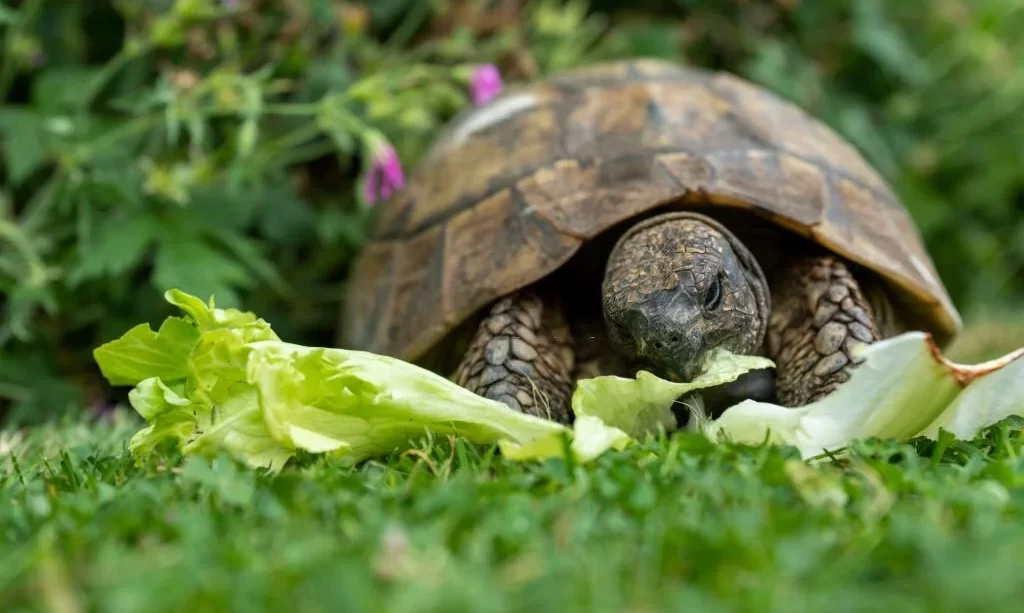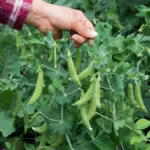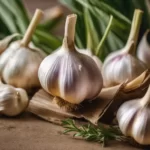Turtles, with their slow and deliberate movements, have long captured our fascination. When it comes to their dietary habits, we often picture them as herbivores leisurely munching on leafy greens. However, the world of turtles is far more diverse than this simple stereotype. Among the vast array of turtle species, you’ll find herbivores, omnivores, and even carnivores, each with unique dietary needs and preferences.
One of the most common queries in the realm of turtle care revolves around lettuce, a readily available and popular leafy green. Many turtle owners wonder whether lettuce is a suitable component of their pet’s diet. In this article, we aim to shed light on the subject of lettuce in a turtle’s diet, exploring whether it meets their nutritional needs and the factors to consider when offering it as a food source.
Turtle Diet: Herbivores, Omnivores, and More
Turtles, known for their diversity in size, habitat, and behavior, also exhibit a wide range of dietary preferences. Understanding the diet of a specific turtle species is essential for providing proper care. Turtles can be broadly categorized into three dietary groups:
- Herbivores: Herbivorous turtles primarily consume plant material such as leaves, grasses, and aquatic plants. They are well-suited to a diet rich in vegetation, as their specialized jaws and digestive systems are adapted for processing plant matter.
- Omnivores: Omnivorous turtles have a diet that includes a combination of both plant material and animal matter. They may feed on insects, small aquatic organisms, and a variety of plant materials. Their diet tends to be more diverse, reflecting their adaptability to different food sources.
- Carnivores: Carnivorous turtles are primarily meat-eaters, consuming fish, amphibians, and other aquatic creatures. Their diet is adapted to a carnivorous lifestyle, with sharp beaks for catching prey and strong jaws for tearing flesh.
Understanding your turtle’s dietary category is the first step in providing appropriate nutrition. The misconception that all turtles are herbivores has led to questions about feeding lettuce to turtles, especially those belonging to the herbivorous category. To explore this further, we’ll delve into the realm of lettuce, a common vegetable frequently considered for turtle diets.
Lettuce: A Common Vegetable
Lettuce, with its crisp leaves and refreshing taste, is a vegetable that frequently finds its way into our salads, sandwiches, and a variety of culinary creations. It’s a common and easily accessible leafy green that many turtle owners contemplate offering to their shelled companions.
Lettuce is renowned for its high water content, which can provide hydration to those who consume it. It’s also low in calories, making it a popular choice for those seeking to maintain a healthy diet. However, the nutritional content of lettuce, particularly in terms of vitamins and minerals, varies depending on the variety.
Some turtle owners consider lettuce as a potential component of their pet’s diet due to its availability and reputation as a healthy food for humans. However, it’s essential to examine whether lettuce aligns with the specific dietary needs of your turtle and whether it offers the necessary nutrients for their well-being. This exploration delves into the suitability of lettuce in a turtle’s diet and provides insights into potential considerations when offering it as part of their food.
Do Turtles Eat Lettuce? The Science Behind It
The pivotal question many turtle enthusiasts pose is whether turtles eat lettuce and if it aligns with their dietary needs. The answer to this question lies in the scientific exploration of lettuce as a food source for turtles. While lettuce is a nutritious food for humans, its compatibility with the nutritional requirements of turtles is a subject of investigation.
Scientific studies and research have delved into the dietary preferences and nutritional needs of various turtle species. These studies provide valuable insights into the potential role of lettuce in a turtle’s diet.
The reality is that while turtles can consume lettuce, it may not be the ideal source of nutrition for all turtle species. Lettuce primarily consists of water, fiber, and some vitamins and minerals, but it lacks some essential nutrients that turtles require to thrive. Additionally, the calcium-to-phosphorus ratio in lettuce is not optimal for most turtles, which can lead to nutritional imbalances.
Certain turtle species, especially herbivores, may include small amounts of lettuce in their diet. However, a diet predominantly based on lettuce may lack the necessary protein, calcium, and other vital nutrients required for a turtle’s growth and well-being. To offer a balanced and nutritious diet, turtle owners should consider a variety of foods that align with their pet’s specific dietary requirements.
Considerations for Feeding Lettuce to Turtles
Feeding lettuce to turtles requires a thoughtful and informed approach. While lettuce can be included in a turtle’s diet, several important considerations should be taken into account:
- Dietary Variety: Turtles benefit from a diverse diet that includes a variety of vegetables, greens, and, for some species, fruits. A rotation of different foods helps ensure they receive a range of essential nutrients.
- Nutritional Supplements: To compensate for any nutritional gaps in a turtle’s diet, it may be necessary to provide dietary supplements, especially for calcium and vitamin D3, to promote healthy shell and bone development.
- Moderation: If offering lettuce, do so in moderation. Lettuce can contribute to hydration due to its high water content, but it should not be the primary or exclusive food source for your turtle.
- Types of Lettuce: Not all lettuce varieties are created equal. Some types, such as romaine lettuce, have a higher nutritional value compared to iceberg lettuce. Choosing more nutritious lettuce varieties can be beneficial for your turtle.
- Observation and Adjustment: Pay close attention to your turtle’s response to lettuce and other foods. If your turtle demonstrates reluctance or digestive issues, consider adjusting its diet to better suit its preferences and nutritional needs.
In conclusion, while turtles can consume lettuce, it should be a part of a broader and well-balanced diet. Lettuce alone may not provide all the essential nutrients that turtles require for optimal health. Responsible turtle care involves understanding the dietary needs of your specific turtle species and offering a diet that caters to those requirements. Feeding lettuce, along with other suitable foods, can contribute to a nutritious and satisfying diet for your shelled companion.
Alternatives to Lettuce in Turtle Diets
For turtle owners seeking to diversify their pet’s diet and provide a well-rounded nutrition plan, there are numerous alternatives to lettuce that can cater to the specific dietary needs of different turtle species. These alternatives not only offer essential nutrients but also enhance the culinary experience for your shelled companion. Here are some excellent options to consider:
- Leafy Greens: Offer a variety of leafy greens such as kale, collard greens, mustard greens, and Swiss chard. These greens are rich in vitamins and minerals, including calcium, and are often favored by herbivorous turtles.
- Aquatic Plants: For semi-aquatic or aquatic turtles, aquatic plants like water lettuce, water hyacinth, and duckweed can be a valuable addition to their diet. These plants provide both nutrition and natural foraging opportunities.
- Vegetables: Expand your turtle’s palate with a mix of vegetables like carrots, bell peppers, zucchini, and squash. These colorful options provide a range of vitamins and minerals and can be fed in moderation.
- Fruits: Some turtle species, especially omnivores, enjoy fruits like strawberries, blueberries, and apples. Fruits can be offered as occasional treats to provide variety.
- Commercial Turtle Pellets: High-quality commercial turtle pellets formulated to meet the nutritional needs of turtles are a convenient and balanced option. They typically contain a blend of protein, vitamins, and minerals.
- Insects: For omnivorous turtles, live insects like crickets, mealworms, and earthworms can be an excellent source of protein. These should be offered in moderation.
The key to a healthy and happy turtle is a diet that reflects the species’ natural food choices and nutritional requirements. Providing a variety of foods ensures that your turtle receives a wide range of nutrients essential for its growth and well-being.
Conclusion
The question of whether turtles eat lettuce leads us to a broader exploration of turtle diets and responsible pet care. While lettuce can be part of a turtle’s diet, it should not be the sole or primary food source for most turtle species. Offering a diet that caters to a turtle’s specific dietary category, whether herbivore, omnivore, or carnivore, is crucial for its overall health and vitality.
As turtle owners, it is our responsibility to educate ourselves about the dietary needs of our shelled companions and to provide a balanced and nutritious diet. By considering alternatives to lettuce and embracing dietary variety, we ensure that our turtles receive the essential nutrients they require for a thriving life.
Feeding your turtle is not just about sustenance; it’s an opportunity to enhance their quality of life by offering a diverse menu that caters to their nutritional needs. By making informed choices and providing responsible care, we can ensure that our turtles live long, healthy, and content lives in our company.



